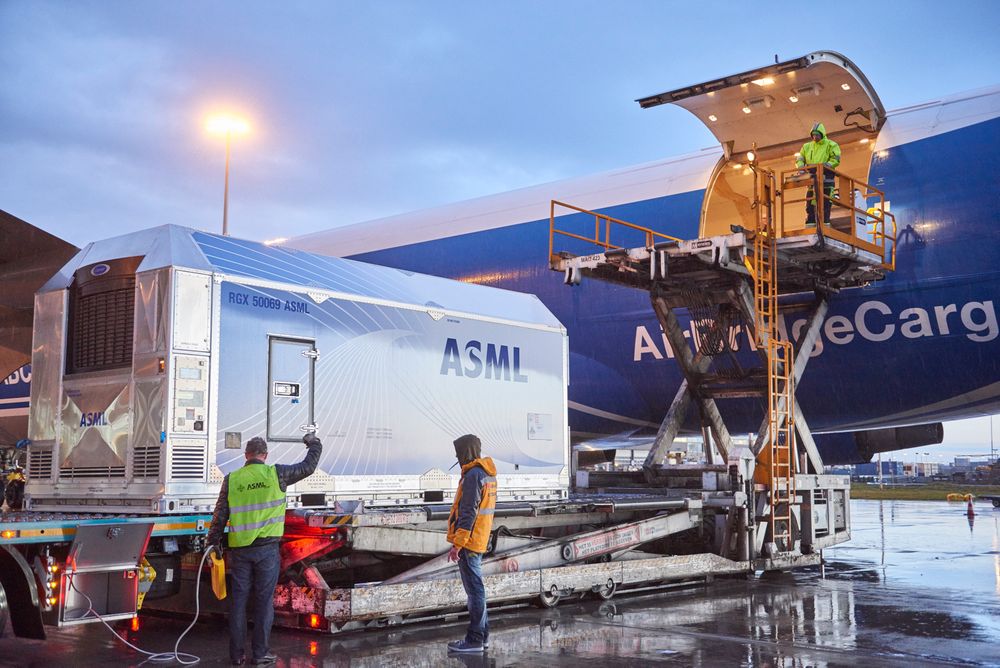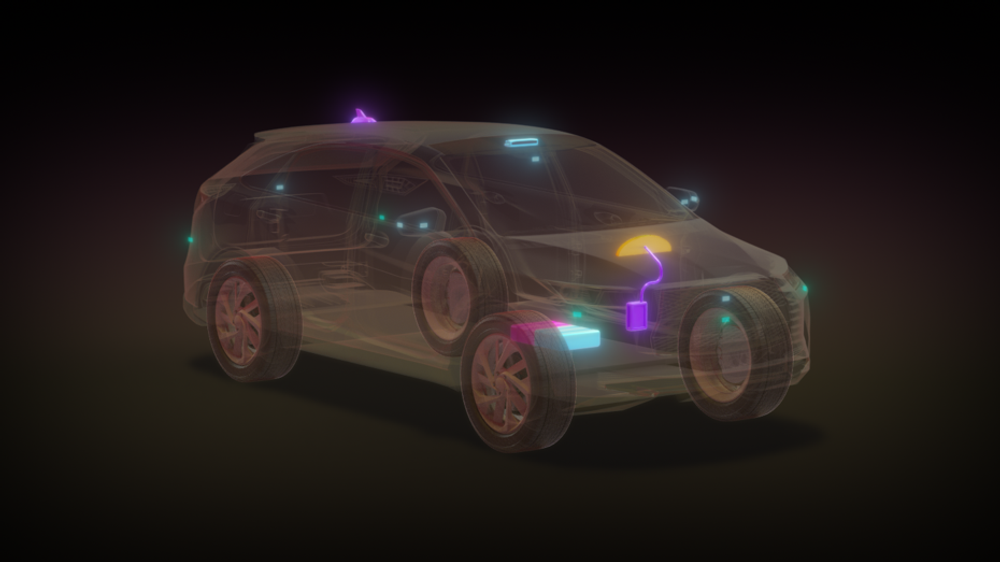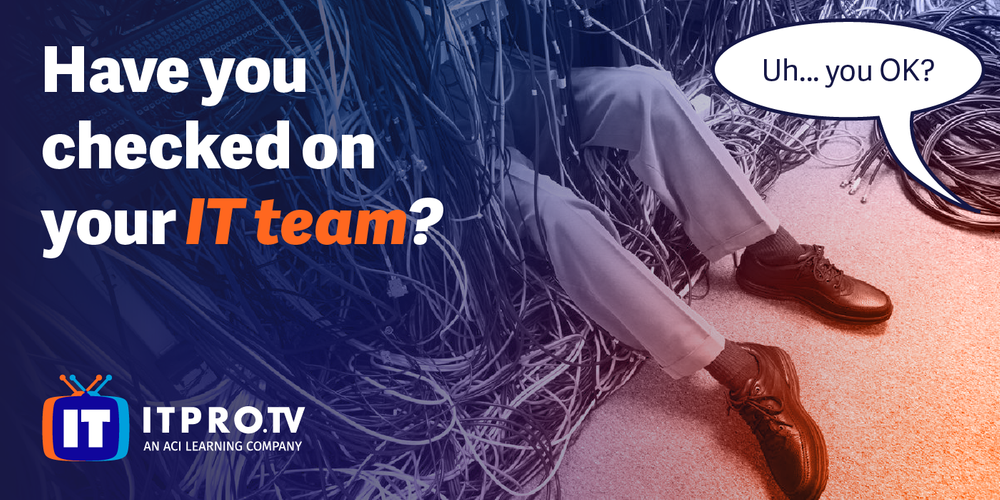|
Good news: Many of you have told us you’d prefer more international coverage in Emerging Tech Brew. Well, we heard you. Today’s newsletter brings you to a Dutch town, then teleports you to various places in Asia.
The best part? You won’t get any jet lag.
In today’s edition:
 Meet ASML Meet ASML
 Highway driving Highway driving
 Battery tie-ups Battery tie-ups
—Ryan Duffy, Hayden Field
|
|

ASML
|
When you think “tech hub,” the predictable places come to mind first: San Francisco, Silicon Valley, Shenzhen, Seattle, Taiwan...and Miami, if you’re on Twitter too much. We have a dark horse to add to the list: Veldhoven, a 45,000-person town and suburb of Eindhoven, the Netherlands’ fifth-largest city.
What’s there? The headquarters of ASML, the world's largest photolithography equipment supplier to the semiconductor industry. In simpler terms, ASML makes and sells advanced chipmaking machines to manufacturers. Its lithography machines enable new hardware like the Apple M1 and Qualcomm’s 5G chipsets.
If semis are the new gold, these machines are the new pickaxes
ASML’s forte is extreme ultraviolet (EUV) machines, which use light at a 13.5 nanometer wavelength to etch billions of tiny structures onto slices of silicon. The Dutch company has a 62% market share in lithography machines and an EUV monopoly. Business...is...booming:
- ASML did nearly $17 billion in 2020 net sales, up from $14 billion the year before. As of this morning, the Dutch company's market cap was roughly $226 billion.
ASML’s big customers—TSMC, Samsung, and Intel—don’t place purchase orders and then expect two-day shipping. Delivery takes roughly two years. ASML’s state-of-the-art EUV machines have 100,000+ parts, cost ~$120 million, and ship in 40 freight containers.
Talking shop with ASML
We caught up with Tony Yen, ASML’s VP of tech development, who is based in Silicon Valley. We touch on the standard cookie-cutter topics we discuss with everyone—pushing the boundaries of physics, Dutch culture, and whether Moore’s Law is dying.
We’ll let you read the full convo for more, but in the meantime, here are a few highlights:
- “We started [thinking about EUV machines] around the year 2000.”
- “The most bleeding-edge technology in high-volume manufacturing is the 5-nanometer node, being manufactured at TSMC and Samsung.”
- “We think of ourselves as the linchpin [in the tech world].”
Read the full Q&A here.
|
|

Zenseact
|
“I’ll see your Cruise Control...and raise you autonomous driving on highways.” —Luminar and Zenseact, essentially.
On Thursday, the lidar tech company, which SPAC’d in December, and Zenseact, Volvo’s self-driving software unit, made an announcement: They’re putting their heads—and their tech—together to bring highway autonomy to consumer cars.
Siri, define “highway autonomy”
Luminar and Zenseact’s new system is called Sentinel, and it promises drivers hands-free and eyes-free autonomous driving on highways (or freeways, if you’re in California).
Why this is big: Today’s advanced driver-assistance systems (ADAS) still require the driver to pay close attention to the vehicle, and manual overrides are common. Luminar and Zenseact are saying their system won’t need the same level of driver supervision.
As with many fledgling business ventures, a parent is the first to believe in the biz plan: Volvo will be Luminar and Zenseact’s initial buyer. Another parent parallel? Volvo will take “full liability” for the autonomous system, reports TechCrunch.
Zoom out: Lately, the majority of the AV industry has been focused on robotaxis or commercial applications. Sentinel, on the other hand, bills itself as the industry’s “first full-stack autonomous system for series production in the industry.”
|
|

|
The past year or so has been tough for IT teams. Between cyber attacks, cloud wars, and WFH challenges, they haven’t been able to catch a break.
Until you came upon ITProTV.
ITProTV is the IT training that top IT professionals wish they had received when they were getting their start. Created by IT people, ITProTV says no to out-of-date, shallow training while still being affordable.
This online training is NOT boring. (Shocking, we know.) ITProTV ditches the dull, voice-over-desktop training that we all hate and opts for a high-def, two-host video format featuring “edutainers” who are there to teach and engage with you.
Stop reading and answer your IT team’s SOS signal with a seven day free ITProTV trial today.
|
|

Francis Scialabba
|
Cuffing season is over, and Panasonic knows it: This weekend, outgoing CEO Kazuhiro Tsuga said that the battery manufacturer—which has been linked to Tesla for years—should start courting other automakers.
“At some point, we need to graduate from our one-legged approach of relying solely on Tesla,” Tsuga told the FT.
The feeling is mutual
In late 2019, Tesla seemed to be keeping its options open by talking to other battery suppliers, like LG Chem, about small-scale partnerships. And in February 2020, Panasonic ended its exclusive relationship as Tesla’s sole battery supplier. In September, Elon Musk announced Tesla’s plan to start in-house manufacturing for some battery cells.
Zoom out: Panasonic and Tesla ultimately want different things. Tesla’s market value has grown to over 22x more than Panasonic’s own, and you could say it’s looking to...focus on itself right now.
For Panasonic, the past nine years have been about stymying losses and diversifying business ventures—and since Tesla’s batteries are more complicated to make, the company wants to prioritize batteries that are “easy to use for other carmakers,” says Tsuga.
|
|

Ryan's drone. The crane you see is for Google's new Austin office, by the way.
|
Stat: NXP Semiconductors could lose $100 million from the winter storm that shut down its chip-making plants in Austin, Texas. NXP is headquartered in Eindhoven, Netherlands.
Quote: “We are focusing our efforts on HomePod mini…[and] discontinuing the original HomePod.”—Apple to TechCrunch.
Read: One US safety agency asked another to impose tighter restrictions on the deployment of Level 2 automated driving systems, and seems to mainly have Tesla’s beta rollout of “Full Self-Driving” in mind.
|
|

|
Great morning when you find $50 lying around. Even GREATER morning when you can use that $50 to invest in crypto. Yep, eToro is giving you $50 when you buy $1,000 worth of crypto today. With eToro, you can experiment with their Virtual Portfolio, choose a ready-made portfolio, or even copy the moves of America’s top crypto traders on eToro, automatically. Claim that $50 here.
|
|
-
Desktop Metal is launching a healthcare vertical. With the possibility of 3D bioprinting regenerative tissues and grafts, it’s worth watching this space.
-
Stripe raised $600 million. New valuation → $95 billion. When IPO?
-
Netflix is cracking down on password-sharing.
-
Mini will go all-electric by 2030, the first BMW brand to take the leap.
-
Adobe added a new Photoshop feature called Super Resolution, which uses AI to up a photo’s pixel count by 4x.
-
Facebook announced AI that can learn audio, textual, and visual details from public videos on the social media platform.
-
Scientists are determining deepfakes via light reflections in the eyes.
-
Via acquired Remix, a mapping software startup, for $100 million.
|
|
THREE THINGS WE'RE WATCHING
|
|
Tuesday: Virtual South by Southwest kicks off. Ryan will still report live from Austin and simulate SXSW physical attendance by riding scooters around the city all week. Speakers we’ll be watching: Kai-Fu Lee, author of AI Superpowers; Amy Webb, quantitative futurist; Cathy O’Neil, author of Weapons of Math Destruction; and Dr. Michael Watkins, director of NASA’s Jet Propulsion Lab.
Wednesday: Saint Patrick’s Day. On a more relevant note, Samsung is expected to reveal a new Galaxy smartphone lineup at its Unpacked media event. The company will also hold its annual general meeting in Suwon, South Korea.
Thursday: After a couple pandemic delays, Nintendo opens Super Nintendo World at Universal Studios in Osaka, Japan. Attendees will be able collect virtual coins with a wristband while walking around the park and ride on a Mario Kart-themed AR roller coaster.
|
|
|
The first Bluetooth-capable phone to enter stores debuted 20 years ago: the Ericsson T39.
Although we now rely on Bluetooth for music streaming—and listening in to Zoom meetings while washing dishes—that first version had speeds of just 721 kbps, which wouldn’t even support CD-quality audio. (Today’s Bluetooth is ~2.5x faster.)
|
|
|
Catch up on the top Emerging Tech Brew stories from the past few editions:
|
|
|
✳︎ A Note From eToro
eToro USA LLC; Investments are subject to market risk, including the possible loss of principal.
|
|
|
Written by
Hayden Field and Ryan Duffy
Was this email forwarded to you? Sign up here.
|
ADVERTISE // CAREERS // SHOP
Update your email preferences or unsubscribe here.
View our privacy policy here.
Copyright © 2021 Morning Brew. All rights reserved.
22 W 19th St, 8th Floor, New York, NY 10011
|
|










